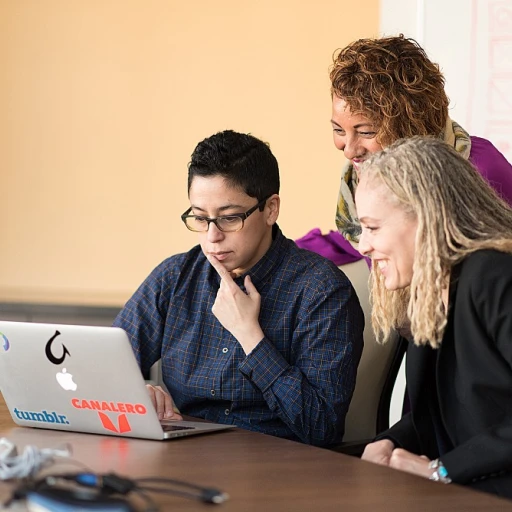
Introduction to the Dreyfus Model of Skill Acquisition
Exploring the Dreyfus Model for Skill Acquisition
The Dreyfus Model, developed through extensive research in the fields of adult skill acquisition, provides a nuanced framework for understanding how individuals progress from novices to experts in various disciplines. This model classifies skill development into five stages: novice, advanced beginner, competent, proficient, and expert. Each stage represents a different level of knowledge and experience, laying a structured roadmap for skill acquisition. At the novice stage, individuals typically follow strict rules and guidelines as they are primarily concerned with understanding basic concepts. It is a crucial period where problems and challenges are primarily approached based on textbook knowledge, without much reliance on experience. As individuals gain more understanding, they move to the advanced beginner stage, where past experiences start to inform their actions, albeit with limited contextual comprehension. Progressing through the stages, individuals eventually reach the competent level of skill, signifying improved problem-solving abilities and a deeper ability to assess situations. The proficient stage introduces a more nuanced understanding, where individuals can tackle problems with a more holistic perspective, considering the bigger picture. Ultimately, the expert stage signifies a pinnacle of skill acquisition, where nuanced problem-solving and intuitive grasp of complex scenarios become second nature. Dreyfus emphasizes how experts operate fluidly and adapt their approach based on the context, demonstrating a mastery unattainable by novices. This structured approach to skill acquisition provides valuable insights that can be employed for identifying and addressing skill gaps in the workforce. By understanding the stages of the Dreyfus Model, organizations can tailor training and development initiatives to efficiently foster skills development among team members, enhancing overall efficiency and problem-solving capabilities. For further exploration on how to navigate skills gap challenges effectively, consider consulting specialized platforms that offer expert guidance and resources to bridge these gaps navigating the skills gap with specialized consulting platforms.Identifying Skills Gaps in the Workforce
Spotting the Areas Needing Improvement
Identifying skills gaps in the workforce is crucial for optimizing performance and competitiveness. By recognizing these deficiencies early, organizations can address them proactively. This process involves evaluating the current skill level of team members against the desired competences necessary for proficient job performance. The Dreyfus model becomes particularly useful here as it breaks down skill acquisition into various stages from novice to expert, allowing for a detailed analysis of the workforce's competencies.
In the initial evaluations, it's essential to differentiate between a novice and an advanced beginner. Novices are typically individuals new to a field or role, often relying heavily on rules and rote learning, while advanced beginners start incorporating experience into their knowledge. As team members progress through these stages, the Dreyfus model provides a structured framework to understand skill acquisition and identify learning opportunities.
PubMed and Google Scholar are excellent resources to explore further the theoretical foundations behind the Dreyfus model and other skill development methodologies. Research papers and case studies can provide insight into which competencies businesses should prioritize.
Moreover, to bridge these identified gaps effectively, implementing targeted training programs is often necessary. For instance, clinical skills acquisition in medical education (med educ) requires tailored approaches to move individuals toward the expert stage. Similarly, in other sectors, enhancing problem-solving skills and fostering team collaboration can significantly benefit from structured interventions based on understanding current competency levels.
For a deeper understanding of bridging skills gaps and strategies to enhance diversity and inclusion within workforce training programs, explore this insightful resource.
The process of identifying skills gaps involves continuous assessment and adjustment. Skill acquisition models should be leveraged to ensure comprehensive knowledge development, ultimately leading to a more competent and adaptable workforce ready to meet future challenges.
Applying the Dreyfus Model to Skills Development
Utilizing the Dreyfus Model for Skill Enhancement
Incorporating the Dreyfus Model into skill development initiatives requires an understanding of its structured approach to skill acquisition and the unique stages individuals progress through. The model delineates five levels of expertise: novice, advanced beginner, competent, proficient, and expert. This framework helps identify where an individual stands in their learning journey and tailors development plans to fit their specific needs.
When developing a strategy for skills acquisition, the first step is recognizing the importance of specialized learning methods. For example, a novice at the initial stage may need a clear set of rules and guidelines to help them follow structured instructions, minimizing ambiguity and potential problems.
As individuals become advanced beginners, they start stepping beyond mere rules to involve problem-solving skills, outlining a transition in their cognitive capabilities. They rely less on rigid rules and more on actionable experience gained from various scenarios.
With further development, when team members reach the competent stage, they can efficiently manage both routine and unexpected problems. They begin to create their personal connection with the tasks rather than solely relying on external instructions, leading to more autonomous skill application.
Progression to the proficient and expert stages signifies a more profound understanding of clinical skills and other complex processes involved in their work. Experts at this stage or level have extensive knowledge, enabling them to recognize patterns and intuitively solve problems. Their skill level allows them to bypass traditional problem-solving stages.
Integrating the Dreyfus Model also facilitates a better understanding among team members, encouraging collaborative learning and shared knowledge. This collective approach improves the overall team’s capability to address complex workplace scenarios efficiently.
Platforms such as PubMed and Google Scholar can provide scientific insights into the model of skill acquisition, solidifying its relevance across different domains, from education to professional development.
Real-World Examples of the Dreyfus Model in Action
Real-World Application: The Dreyfus Model in Action
Implementing the Dreyfus Model for skill acquisition in real-world settings often begins with understanding the five distinct stages that individuals progress through: novice, advanced beginner, competent, proficient, and expert. The transition from each stage represents a growth in knowledge and practical experience, which directly enhances problem-solving skills and overall skill development.
In clinical settings, for instance, the application of the Dreyfus Model is evident as medical practitioners move through these stages. Novices in medical education start with learning rules and acquiring basic clinical skills, often relying heavily on guidelines and protocols. As they advance, they begin to use experience to navigate more complex situations, gradually moving from the advanced beginner to the competent stage. At this level, clinical skill acquisition involves more autonomous and nuanced decision-making.
Industries outside healthcare also benefit from the Dreyfus Model. In technology sectors, for example, software developers might initially solve problems by strictly following step-by-step methods. With experience, they advance to the expert stage, showcasing a deeper understanding and ability to innovate or intuitively resolve issues without needing explicit instructions.
One notable resource, PubMed, recognizes that as individuals conquer these skill stages, the cultivation of team member dynamics improves. Team members better at navigating the model can mentor novices and advanced beginners, fostering a progressive skill level throughout an organization. Additionally, academic references such as Google Scholar and DOI provide substantial evidence on the effectiveness of this model across various fields, underscoring its applicability and validation.
Challenges still exist in applying the Dreyfus Model comprehensively. Complex problems sometimes arise, as real-life scenarios can differ substantially from theoretical structures. Nonetheless, the model remains a trusted framework endorsed by numerous scholars and industry practitioners for its structured approach to skill acquisition.
Challenges in Implementing the Dreyfus Model
Overcoming Barriers in Applying the Dreyfus Model
Implementing the Dreyfus Model of Skill Acquisition in real-world settings can be fraught with challenges. While the model provides a structured framework for understanding how individuals progress from novice to expert, several obstacles can hinder its effective application in workforce development.
Complexity of Individual Learning Paths
One of the primary challenges lies in the model's assumption that individuals will progress linearly through the stages of skill acquisition: novice, advanced beginner, competent, proficient, and expert. In reality, learning is not always a straightforward journey. Each team member may experience different learning curves, influenced by personal motivation, prior experience, and the complexity of the skills being acquired. This variability can make it difficult to standardize training programs and measure progress consistently.
Resource Allocation and Training Costs
Another significant hurdle is the allocation of resources necessary to support skill development. Organizations must invest in comprehensive training programs, which can be costly and time-consuming. Balancing the need for immediate productivity with long-term skill acquisition is a delicate task. Additionally, identifying and retaining expert trainers who can effectively guide learners through the various stages can be challenging, especially in specialized fields like clinical skills development.
Resistance to Change
Resistance from both management and employees can also impede the implementation of the Dreyfus Model. Some may question the relevance of structured learning stages, especially in fast-paced environments where immediate problem-solving skills are prioritized over gradual skill development. Overcoming this resistance requires clear communication of the model's benefits and the long-term advantages of developing a skilled workforce.
Adapting to Evolving Knowledge and Technology
Finally, the rapid pace of technological advancement and the continuous evolution of knowledge pose additional challenges. As industries evolve, the skills required at each stage of the Dreyfus Model may shift, necessitating ongoing updates to training programs. This constant adaptation requires organizations to remain agile and responsive to changes in the skills landscape.
While the Dreyfus Model offers valuable insights into skill acquisition, its successful implementation demands careful consideration of these challenges. By addressing these obstacles, organizations can better harness the model's potential to close skills gaps and foster a more competent and adaptable workforce.












